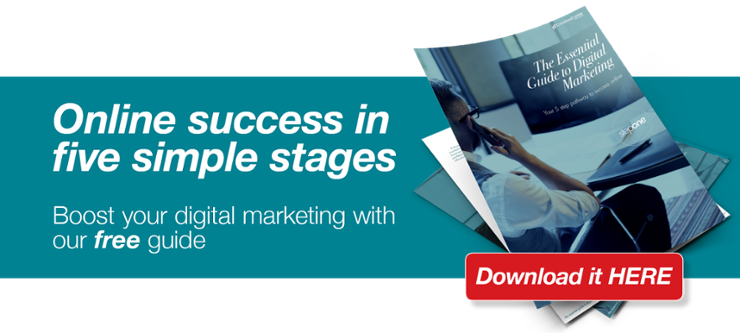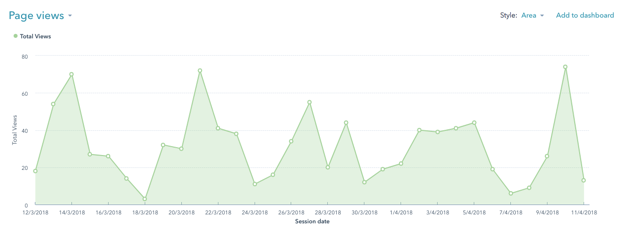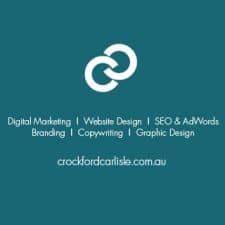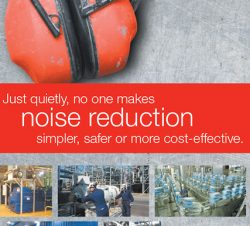6 places to look to find the problem
If you have an Inbound Marketing campaign up-and-running, but you’re not yet seeing the results you were hoping for, this article will help you to look in the right places to find the breakdown.
As a digital agency that has specialised in Inbound Marketing for several years now, at Crockford Carlisle we've looked at many campaigns for business owners who have been frustrated with their results.
When they come to see us for advice, we often find that a lot of what has been done is in pretty good shape, with parts of the sales funnel working well.
But somewhere in the chain of events, there are usually one or two aspects that are not working properly – which chokes up the funnel. As a result, they are not seeing the flow of leads that they need to grow their business.

In this post, we look at the various steps in an Inbound Marketing campaign, and give you some insight as to where to look to find (and fix) any weak spots. They are:
1. Is your content truly valuable?
2. Is your blog optimised for conversions?
3. Are your website pages optimised for conversions?
4. Is the messaging on your website clear?
5. Are sales and marketing aligned?
6. Are you measuring inbound success correctly?
Let’s roll up our sleeves and dig in!
1. Is your blog content truly valuable?
The cornerstone of your Inbound Marketing campaign’s success is how much organic traffic your blog content can attract.

If traffic is low, you simply won’t have the people you need to work with on a monthly basis to build your lists and nurture potential buyers through each stage in your sales funnel.
What’s the problem?
The problems often occur when the blog author forgets the buyer somehow, either:
- Forgetting their problems
- Forgetting their questions, or
- Forgetting their objectives.
When this happens, the content loses its pulling power. That’s because the subject is usually about “what the business does” (the writer’s favourite subject) and not about “what the reader wants to know” (the potential buyer’s favourite subject.
To refocus your blogging efforts, you first need to understand who you are blogging for. I don’t just mean your broad “target market”. I mean the PEOPLE you want to reach.
How to fix it
Attracting more of the right type of visitors to your website means looking at life through the eyes of pre-purchase buyers who are researching their problems online.
Two (very important) things on this issue:
Firstly: If you haven’t done so, you need to download our free Turning Prospects Into People eBook.
It will help you to figure out your profitable Buyer Personas, so that you can make sure the content on your blog is aligning with their needs.
Secondly: Take a look at your blog and ask yourself, “Does this content help anyone?”.
If your blog posts do not explain or solve challenges your buyers are having before they purchase, they simply will not align to the problem-oriented queries that those people are entering into search engines.
As a result, your blogs won’t be found on Google – because noone is looking for that content! And therefore, they won’t be effective at bringing your potential buyers into your site.
Let's be clear:
Pre-purchase buyers do not give a fat rat’s clacker about your business. If your blog consists only of company news, latest hires, and product updates, it will not be the foundation of inbound success.
Pro Tip: If you struggle to shift the content of your blog posts towards being more helpful, take a breather from trying to “create” blog posts and start “documenting” instead.
Being creative is hard. But you’ll find documenting the things you do, discoveries you make, and problems you solve is much easier. And the good news is these types of posts will often drive more traffic than any others.
2. Is your blog optimised for conversions?
If your Analytics data shows that your blog is working fine and actually is drawing traffic to your site, the next thing to check is the conversions you are getting from your blog.
Blogs are excellent at bringing visitors into your website. But blog posts on their own will not make your website convert.
If you want to turn anonymous blog readers into known leads that you can nurture and remarket to, you need to provide relevant ways and reasons for them to convert.
What’s the problem?
Blog posts with no clear call to action (CTA), or with CTAs that point to other blog posts or pages that do not convert, are a wasted opportunity to generate leads.
If your blog articles are well written, then your reader will have gained some good knowledge or insight that they didn’t have previously. They will also start to have a feel for how you may be able to help them to achieve what they want, and whether your business is one that they feel comfortable with.
Not all people will react this way of course. Many will read a bit, feel that what you have to say isn’t for them, and bounce off.
But if you create the right content for your Buyer Personas, then some of these stars will align and they will be open to a deeper engagement with you.
If your blog is to convert, then you need to provide an easy ‘next step’ for people.
If you don’t have this step in place, then the journey will end. The rest of your funnel will be empty.
How to fix it
Make sure that every blog post you write has a CTA pointing to a relevant and valuable conversion offer.
If you do not yet have the content for these conversion offers, this must be your next priority.
Writing an in-depth ebook or whitepaper (or guide or explainer or checklist) that fully explores a topic is a key practice in successful inbound marketing. It’s one you cannot afford to put off.
PRO TIP: Remember, you also want to test whether your CTAs are appealing, to make sure you are getting as many conversions as you can from the traffic that each blog post creates.
In the example below, you can see the results of an A/B variant test that we’ve been running on our own site, to determine which CTA is the better converter.
 This data acts as a guide for continuous improvement.
This data acts as a guide for continuous improvement.
Never sit on sit on your laurels. Never “set and forget”
Our data analyst is constantly working with the creative team to try and improve on the results of the best-performing CTAs. After all, even a 1% conversion improvement on a blog post can turn into thousands of dollars in profit for you over time!
3. Are your website pages optimised for conversions?
For Inbound Marketing to work, you have to have a “take every opportunity to improve” mindset.
As well as making every post a winner on your blog, this means combing through your main website’s product and service pages to look at (and fine tune) the conversion points.
What’s the problem?
When a product/service page isn’t converting, it may be that the ‘next step’ offer (the CTA) doesn’t line up with the mindset of the person viewing the page.
Here’s the thing to remember:
Generally speaking, a product/service page is likely to be read by someone who is further along the Buyer’s Journey than someone who has found a blog post (which are usually towards the top of the funnel).
They aren’t doing ‘early research’.
They know what they want, and are looking for the best supplier to meet their needs.
To get them to convert with you, you need to make sure that the available ‘next step’ is a natural progression from where they are right now in their journey.
How to fix it
Think about the content on each page. And consider the logical ‘next step’ for the person who has just read that piece of content — and make sure that the action available to them is clear

Create (and test!) specific bottom-of-the-funnel conversion offers (or BOFOs), such as:
- Consultations
- Audits, or
- Demonstrations
...and put CTAs for these on relevant pages throughout your site.
PRO TIP: You can’t do everything, and some things will take priority over others. When we look at a site, our data analyst checks through to see which product/service pages have the highest traffic. 
 If there are some standouts, and if they are appealing to the right people who are good for business, the team may invest time in crafting a CTA and landing page that is SPECIFIC to that service offering.
If there are some standouts, and if they are appealing to the right people who are good for business, the team may invest time in crafting a CTA and landing page that is SPECIFIC to that service offering.
This may be something you should look at for your Inbound campaign.
If there is a ‘hot page’ on your site, then the extra time invested in creating a high converting next step may be very profitable — and be an easy win for your Inbound campaign.
4. Is the messaging on your website clear?
This is tangled up with the above issue, but it is important – so let’s dig into it a little.
Put simply: A poor website, in terms of design or clarity, reduces the number of visitors who download content or make contact.
The reality is that all your best leads will use your website as a key resource when deciding how to engage with you.
Content on your blog will help you drive you more traffic, generate more leads, and keep them coming back. But your main website will determine if these people become an opportunity or not.
A clear message and a good design (prioritising the user) are essential.
What’s the problem?
Take your homepage for example – what's the first thing a new visitor will see and read?
Often the first message on a homepage is obscure nonsense that leaves visitors none-the-wiser as to the purpose of the company whose website they are on, and unsure as to if they should stay or not.
How to fix it
A far better approach is to simply state what your value proposition (what you do and who you do it for) is, clearly and concisely. It may not feel “clever”. But it will be much more effective at getting visitors to stay on your site.
The same principle (using clear messages over confusing ones) applies throughout your website. Your sitemap, navigation, page titles, page content, CTAs and conversion offers should all favour clarity over cleverness.
Putting clarity first – every step of the way – maximises the likelihood that the right visitors, once on your site, will stay and convert. 5. Are sales and marketing aligned?
5. Are sales and marketing aligned?
One you've sorted out content, conversion offers, and your website, you need to ensure that any inbound leads are being given the proper attention by aligning sales and marketing.
I can’t stress the importance of this enough.
Depending on the business and how things are rolling, we sometimes START our planning for an Inbound Marketing campaign with our client’s sales team.
You can read more about this in our article Website Design — why you should involve your sales team from the very start.
We want to know what criteria determine whether a lead is a Sales Qualified Lead (someone they want to talk to), and work back from there. It helps us to figure out their Buyer Personas, and what steps we need to take to build lists of people who match the desired profile. Eg:
- Their role
- Their main challenge that our client can help them with
- Their location
- Timing
- Size of project etc.
As Inbound Marketing specialists, it is our job to understand this, and then figure out the strategy to find more of these people for you.
What’s the problem?
While it is true that marketing is responsible for a larger part of the buying process than before, in most cases buyers still need sales' help to become customers.
If your sales team haven’t had input into the development of your Inbound strategy, and are not geared up to work with the leads that come in, then all will be for nought.
How to fix it
Make sure that:
- Inbound leads are assigned to the right people,
- Those people are notified, and
- They know where to find and how to interpret inbound lead data.
Prompt follow-up and accurate record keeping by sales will help to ensure that inbound ROI is realised in the shortest time possible.
As a HubSpot partner agency, we offer services to make sure that our clients’ sales teams know where to look in the CRM to see the browsing and engagement history of a lead BEFORE they call them. That way, they have a clear understanding of the prospect’s challenges, and can be better placed to solve them for them.
6. Are you measuring inbound success correctly?
Once your Inbound Marketing campaign begins to mature, there are other flow-on benefits that will start to become visible.
If you don’t watch out for them, you may miss them and fail to recognise that they are actually the fruits of your “Inbound labour”.
What’s the problem?
Measuring the success of your Inbound Marketing ONLY by the number of opportunities and sales that originate through inbound channels is a mistake.
If you are executing inbound Marketing well, you will see changes in the number of enquiries you receive from bottom-of-the-funnel prospects via:
- Direct email,
- Website “Contact Us” forms, or
- The telephone.
This will be the result of improved SEO and a better-converting website.
How to fix it
Be better at reporting. Know what’s going on. Measure stuff to see where the changes are.
This isn’t easy, as sometimes some KPIs can be missed — or be difficult to measure. But overall, you need to figure out a way to track what is happening with enquiries and leads from ALL sources.
I have seen a situation where a business was getting ‘referral leads’ from someone who hadn’t even used them yet!
They guy had read their blog… engaged with content… been impressed with what they did.
As a result – even though he hadn’t been ready to buy – he had told some associates about the firm, and they had become $50,000 customers.
None of this would have happened if the Inbound Marketing hadn’t been ship-shape. And no one had joined the dots to realise that it had even happened as a result of the Inbound campaign
Try and track and measure what’s going on. As much as you can!
Not sure whether your Inbound Marketing campaign is being run properly?
If you’d like to talk about your growth objectives, and whether your Inbound Marketing is set up properly to get you there, please call Crockford Carlisle and we can talk it over.
We’ll look at your numbers, your site, and your competitors, along with what you are currently doing, and where you see the problems and challenges are.
If it looks like there are some changes needed, we can give you some first steps to consider.
You can call us now on (07) 3891 3800. Or if you prefer, use the calendar on this page to pick a day/time to book 15 minutes for a heads-up phone call.
We work with business owners from around Australia who are serious about growth, but are often frustrated that they’ve spent time, money, and effort on their website, yet find that it still doesn’t produce the traffic and leads they had hoped for.
We can help you too!



















